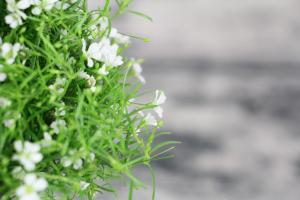How Far Apart Should Tomato Plants Be Planted?
Tomatoes are a popular garden crop, loved for their juicy and flavorful fruit. Proper spacing when planting tomato plants is essential for strong growth, disease prevention, and optimal yields. In this article, we'll explore how far apart tomato plants should be planted for the best results.
Why Proper Spacing is Important
When tomato plants are placed too close together, they'll compete for necessary resources like sunlight, water, and nutrients in the soil. This can lead to stunted growth, decreased yields, and increased susceptibility to diseases. Additionally, overcrowded plants may have less air circulation around them, creating moist conditions that are ideal for fungus and other plant diseases to thrive. On the other hand, if tomato plants are spaced too far apart, they may not support each other as well, making them more prone to falling over during heavy winds or storms.
Spacing for Determinate Varieties
Determinate tomato plants grow to a fixed size and set all of their fruit at once. These plants tend to be shorter and bushier than indeterminate varieties, making them ideal for smaller spaces or for gardeners who want to harvest their tomatoes all at once. To space determinate tomato plants, place them 2-3 feet apart in rows that are 3-4 feet wide. This allows for plenty of air circulation and sunlight without the plants getting in each other's way.
Spacing for Indeterminate Varieties
Indeterminate tomato plants can grow several feet tall and continue producing fruit throughout the growing season. These plants require more space and support than determinate varieties to handle their size and yields. To space indeterminate tomato plants appropriately, place them 3-4 feet apart in rows that are 4-5 feet wide. This provides a suitable distance for each plant to grow, spread out, and be supported by stakes, cages, or trellises.
Other Factors to Consider
In addition to spacing, other factors can impact how well your tomato plants grow and produce. Start by selecting healthy seedlings or young plants from a reputable nursery or supplier. Choose a location that receives at least six hours of sunlight per day and has well-draining soil. Water your tomato plants regularly, being careful not to over-water or under-water them. Finally, consider fertilizing your plants with a balanced fertilizer that provides essential nutrients like nitrogen, phosphorus, and potassium.
In Conclusion
Proper spacing for tomato plants is essential for healthy growth, disease prevention, and optimal yields. For determinate varieties, space plants 2-3 feet apart in rows that are 3-4 feet wide. For indeterminate varieties, space plants 3-4 feet apart in rows that are 4-5 feet wide. With the right spacing and care, you'll be on your way to growing delicious and fruitful tomatoes in your garden.

 how many times do yo...
how many times do yo... how many planted tre...
how many planted tre... how many pine trees ...
how many pine trees ... how many pecan trees...
how many pecan trees... how many plants comp...
how many plants comp... how many plants can ...
how many plants can ... how many plants and ...
how many plants and ... how many pepper plan...
how many pepper plan...






























